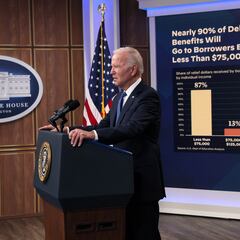What is the average credit card debt in the US in 2022?
Credit card debt has been increasing since the covid-19 pandemic, a worry for many as interest rates continue to rise.


The pandemic offered plenty of middle-class Americans the chance to reduce their credit card debt. Indeed, total credit card debt fell from nearly $1 trillion to $770 billion at the beginning of 2021. Since then this debt is back on the rise; it is up 13 percent compared to a year ago. The average household credit card debt is nearly $9,000 with a total of $887 billion in Q1 2022. It’s the fastest rise in more than 20 years.
Credit cards are always a risk. They offer people the chance to spend money they may not actually possess and could lead to crippling debt. With an extremely volatile economic situation at present household debt is a worry for many. It being back on the rise should be a warning sign for politicians looking to protect its citizens.
Why is this a problem?
When interest rates are low then credit card debt repayments are similarly low. If money is borrowed from the bank with low interest rates then the amount paid back will not be much more than the original.
However, high inflation in the US economy since the turn of the year has convinced the Federal Reserve to push up interest rates. These high rates are supposed to disincentivise investment and force people out of work, tightening belts and stopping people spending.
Another knock on from high interest rates is the cost of owning debt increases. With interest rates have risen from 0.25 percent on January 1 to 3.25 percent by October 1. This means the highest borrowing costs since the 2008 financial crisis, putting a big weight onto the shoulders of those with credit card debt.
“They had extra savings, they had government stimulus money, but as inflation has gotten worse that’s really reversed,” Washington Post economics reporter Abha Bhattarai told CBS News. “We’re starting to see people charging more on their credit cards and owe more than usual as well.”
Related stories
The last time interest rates were this high was coincided the second highest amount of credit card debt in the last 12 years, the 2008 crisis. At the end of Q4 2008 Americans had a combined $870 billion of credit debt during the ‘Great recession’.
“Some 58.9% of economists said they think the Fed will raise interest rates too much and cause unnecessary economic weakness, up from 45.6% in July.”https://t.co/KX8My2lslD
— Ken Klippenstein (@kenklippenstein) October 17, 2022
With another recession expected and actually an aim of the Fed then people with large credit card debt are in danger of having spiralling costs, potentially losing the ability to pay for things like rent and mortgages. CNN reported in 2010 that the recession caused some 170,000 families to move into homeless shelters. The high interest rates will cripple families if the problem is not tackled.

